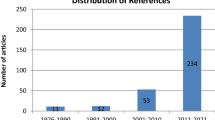Abstract
A novel embedded sensor network records changes in key climatic-environmental variables over a range of altitude in the BaekduDaegan Mountain (BDM) of Gangwon Province in Korea, a protected mountain region with unique biodiversity undergoing climate change research. The investigated area is subdivided into three horizontal north-south study areas. Three variables, temperature (T, °C), relative humidity (RH, %), and light intensity (LI, lumens m−2, or lux, lx), have been continuously measured at hourly intervals from June, 2010 to September, 2011 using HOBO H8 devices at 10 fixed study sites. These hourly observations are aggregated to monthly, seasonal and annual mean values, and results are summarized to inaugurate a long-term climate change investigation. A region wide T difference in accordance with altitude, or lapse rate, over the interval is calculated as 0.4°C 100 m−1. T lapse rates change seasonally, with winter lapse rates being greater than those of summer. RH is elevated in summer compared to other seasons. LI within forestland is lower during summer and higher during other seasons. The obtained results could closely relate to the vegetation type and structure and the terrain state since data loggers were located in forestland.
Similar content being viewed by others
References
Andrew D, Xuhui L, Andrew JF (2004) Microclimatology of treeline spruce-fir forest in mountains of the northeastern United States. Agricultural and Forest Meteorology 125: 53–66.
Barry RG (1992) Mountain Weather and Climate. 2nd edition, Routledge, London, UK pp 402.
Barry RG, Chorley RJ (1987) Atmosphere, Weather and Climate. 5th edition, Routledge, London, UK. pp 448.
Choi GY, Lee BR, John SK, et al. (2010) Variations of summertime temperature lapse rate within a mountainous basin in the Republic of Korea. A case study of Punch Bowl, Yanggu in 2009. The Korean Association of Regional Geographers 16(4): 339–355. (In Korean)
Chung UR, Seo HC, Yun JI (2003) Air temperature variation Affected by site altitude in hill orchards. Korean Journal of Agriculture and Forest Meteorology 5(1):43–47.
Chung U, Seo HH, Yun JJ, et al. (2003) An optimum scale for topoclimatic interpolation of daily minimum temperature in complex terrain. Korean Journal of Agriculture and Forest Meteorology 5: 261–265. (In Korean)
Dodson R, Marks D (1997) Daily air temperature interpolated at high spatial resolution over a large mountain region. Climate Research 8: 1–20. (In Korean)
Fu BP, Yu JM, Lu QY (1996) Resources and Development Exploitation of the Mountainous Country Weather. Nanjing University Press, Nanjing, China. pp 165–179.
Hamlet AF, Lettenmaier DP (2005) Production of temporally consistent gridded precipitation and temperature fields for the continental United States. Journal of Hydrometeorology 6(3): 330–336.
Jackson MT, James NE (1967) Indices for expressing differences in local climates due to forest cover and topographic differences. Forest Science 13(1): 60–71.
Justin RM, Philip WM, Jessica DL (2009) Surface temperature lapse rates over complex terrain: Lesson from the Cascade Mountains. Journal of Geophysical Research 115: D14122, doi: 10.1029/2009JD013493.
Kim EK (2010) Terrestrial mammalia of Korea national park in Baekdudaegan. Journal of National Park Research 1(2): 104–107.
Kang S, Kim S, Oh S, et al. (2000) Predicting spatial and temporal patterns of soil temperature based on topography, surface cover and air temperature. Forest Ecology and Management 136: 173–184.
Korea Forest Service (2006) BaekduDaegan Mt. White Paper 2006. Korea Forest Service, Daejeon, Korea. pp 625. (In Korean)
Korea Meteorological Administration (2011) KMA observation network. Available online: http://web.kma.go.kr/eng/biz/observation_01.jsp. (Accessed on 10 December 2011)
Korea National Arboretum (2009) Report of Conservation Project of Threatened Plants for Climate Change 2009. Korea Forest Service, Daejeon, Korea. p 804. (In Korean)
MacHattie LB, McCormack RJ (1961) Forest microclimate: a topographic study in Ontario. Journal of Ecology 49: 301–323.
Maurer EP, Wood AW, Adam JC, et al. (2002) A long-term hydrologically based dataset of land surface fluxes and states for the conterminous United States. Journal of Climate 15(22): 3237–3251.
Meritexell P, Josep RM, Abdelmalik (2009) Determining Temperature lapse Rates over Mountain Slope Using Modified GWR in the Pyrenees Area. Meteorological Service of Catalonia, Barcelona, Spain. p 11.
Ministry of Environment of Korea (2011) Biodiversity in the Baekdudaegan proved to be abundant. Available online:http://eng.me.go.kr/board.do?method=view&docSeq=9486&bbsCode=newinfocus¤tPage=2&searchType=&searchText=. (Accessed on 1 April 2011)
Park SG, Joo SH, Lee KH, et al. (2010) Relationship between climate and tree-ring of Pinus densiflora in ridge of the Baekdudaegan, Korea. Journal of Agriculture & Life Science 44(5): 35–43. (In Korean)
Park HS, Lee SY, Chae HM, et al. (2009) A study on the development of forest fire occurrence probability model using Canadian forest fire weather index ? Occurrence of forest fire in Gangwon Province. Journal of the Korean Society Hazard Mitigation 9(3): 95–100. (In Korean)
Pepin NC, Duane WJ, Hardy DR (2010) The montane circulation on Kilimanjaro, Tanzania and its relevance for the summit ice fields: Comparison of surface mountain climate with equivalent reanalysis parameters. Global and Planetary Change 77: 61–75.
Petersen GW, Bell JC, McSweeney K, et al. (1995) Geographic information system in agronomy. Advances in Agronomy 55: 67–111.
Potter BE, Teclaw RM, Zasada JC (2001) The impact of forest structure on near ground temperatures during two years of contrasting temperature extremes. Agricultural and Forest Meteorology 106: 331–336.
Rolland C (2003) Spatial and seasonal variations of air temperature lapse rates in Alpine regions. Journal of Climate 16: 1032–1046.
Tang ZY, Fang JG (2006) Temperature variation along the northern and southern slope of Mt. Taibai, China. Agriculture and Forest Meteorology 139: 200–207.
Yun JI, Choi JY, Ahn JH (2001) Seasonal Trend of Altitude Effect on Daily Air Temperature in Korea. Korean Journal of Agricultural Forest Meteorology 3(2): 96–104. (In Korean)
Author information
Authors and Affiliations
Corresponding author
Rights and permissions
About this article
Cite this article
Chae, H., Lee, H., Lee, S. et al. Local variability in temperature, humidity and radiation in the BaekduDaegan Mountain protected area of Korea. J. Mt. Sci. 9, 613–627 (2012). https://doi.org/10.1007/s11629-012-2347-0
Received:
Accepted:
Published:
Issue Date:
DOI: https://doi.org/10.1007/s11629-012-2347-0




